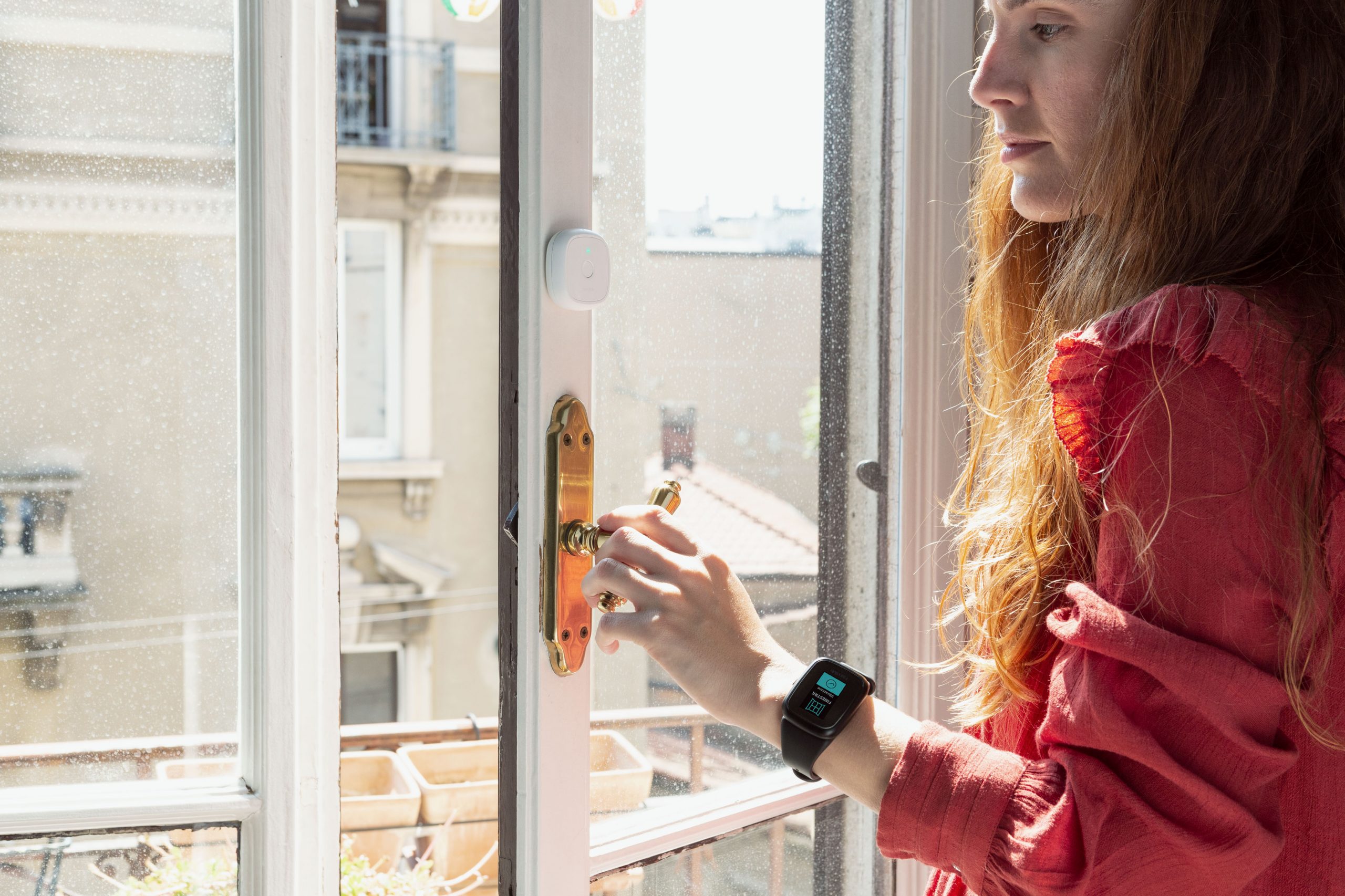
Alessandra Farris knows better than anyone what it is like to go deaf in life. Not because she doesn’t hear herself, but because both her parents are deaf. Farris saw with her own eyes what the stumbling blocks in the life of deaf people are. You forget, for example, that there is a kettle of water on the stove, with the result that it boils dry or worse. You are expecting a delivery from a courier, but if you don’t keep an eye on the front door all the time, you will never get the parcel because you don’t hear the doorbell.

Farris has managed to remove some of these annoyances and risks by creating a fairly simple invention. It also saves time. Together with two former classmates of the University of Cagliari in Sardinia, Italy, she has come up with a solution which takes the deaf person out of their silent world, especially in the moments when it matters most.
Smartwatch, sensors and an app
The technique behind KitMe, as the product is called, is quite simple. It consists of a smartwatch, several sensors and an app. The sensors are equipped with an adhesive edge and glued to a sound source. This could be anything that vibrates or makes noise, such as a doorbell, the timer of the smoke detector or a kettle.
The sensors can go anywhere. “The only limit is your imagination,” says Farris. The sound detectors, which are about two square centimeters in size, are easy to move and can therefore also be used at work, school or on vacation.
The Sardinian invention can also be a godsend for deaf parents who have a baby. Nowadays, it is often the case that the cradle is monitored with the help of a camera, and the parents have to keep a constant eye on the display of the cell phone, tablet or other device.
A tug on the wrist
With KitMe all that is needed is to place a sensor near the cradle or the baby monitor. It makes the parents more mobile and free. “Not so long ago, deaf mothers checked the baby’s cradle by connecting a long wire between the cradle and the wrist,” says Farris. “Whenever the baby moved, the wire also moved and the parent felt a tug on their wrist. The alternative is to keep an eye on the baby at all times, like my mother did with me.”
When the KitMe sensor is activated, the user receives a signal on a special smartphone in the form of a light signal, a message on the display or a vibrating sound. With the included app, the user can set it all up however he or she prefers.
Radio waves instead of the internet
Farris is not afraid that the Apple Watch or other similar ‘minicomputers on the wrist’ will be a threat in the future. In any case, as far as we know, there are no specific applications on the Apple Watch for the deaf and hard of hearing. “One difference is that KitMe uses radio waves and does not require an internet connection,” says Farris. The use of sensors as part of a warning system is not known to exist yet, either.
Warning systems, on the other hand, do already exist. In this case, a network is created at home to which household appliances are connected. The deaf person is warned by a vibration or a flashing light when, for example, a call is made at home. The disadvantage of this is that it requires installation and every new device must be connected. With sensors the use is much more flexible.
Lip-reading customer service
The makers of KitMe have chosen the ‘as a service’ business model. Users need to take out a subscription to use the system. This includes a unique kind of customer service as the call center is staffed by people who are deaf and others who can lip-read and know sign language. Contact is therefore via video chat.
KitMe will be launched this month by the company IntendiMe, after a long three-year development phase. Success seems guaranteed. There is no other way to explain how Farris and her inner circle got a crowd of supporters and financiers behind them. Two venture companies have put a total of €2.5 million on the table and the invention has already won a dozen or so awards. For the time being, KitMe is only available in Italian. But in principle, the system can also be used by someone who can navigate the Italian app and does not need customer service with Italian lip-reading.

